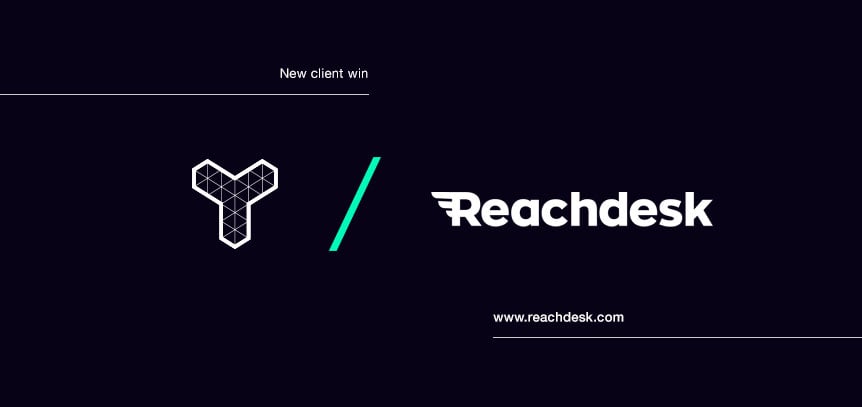
How mature is your social media lead generation process?
Find out how your sales team can effectively use social media to identify potential new customers and boost their lead generation efforts.

As we progress further into a new year in digital marketing, it’s important to take stock of your current activity and its success. Social media is not just a marketing and branding tool; it should integrate as part of your sales strategy as a whole.
As social media marketing itself is evolving, many businesses are looking for more than just conversations and engagement with their target audiences on these platforms.

Understand your audience
Companies that understand what content their audience wants, enjoys and needs are those that are leading the way in lead generation and are seeing tangible results from their efforts. Clearly defining your audience enables you to make key decisions about your social media strategy. Carry out research to clearly understand your audience, using key questions about their online behaviour. This article in Forbes offers 6 steps to take in order to decode your target audience.
A digitally mature company will create detailed persona templates that can be shared across the sales and marketing teams to ensure a consistent understanding of your target audience. Creating detailed persona templates is a proven technique in order to truly understand the ideal customer your company is trying to attract, and to help relate to customers as real humans.
Understanding your buyer persona is critical to driving content creation, product development, sales follow up and anything that relates to customer acquisition and retention.
Once you have a strong idea about your target audience you should be able to answer the following questions about your social media:
1. Are you using the right channels for your audience?
LinkedIn, Twitter and a blog are essential for B2B marketers. Slideshare and Quora could provide additional extras for sharing presentations and valuable insight. You should also look into Twitter founder Biz Stone’s new social query app Jelly, which was launched to breathe new life into the process of finding the answers to questions online. Some US brands are using it in innovative ways to pose questions to the online community.
2. How do your social media channels appear?
You should check that all the links to your channels work and send traffic through to the correct pages. If you have any dead or inactive channels, get rid of them as nothing looks worse to your potential clients as an abandoned social media page. The content should be no less than a week old and should be engaging, appropriate and interesting for potential new customers to see. Your sales team should be able to confidently direct their potential customers to your social media channels, where they can find out more information about certain campaigns, insight or offers. You should never be embarrassed to send new customers here.
3. Are you investing in the right content?
Understanding your target audience makes all the difference when you’re creating content in your social media channels and on your blog. If you know what your audience responds well to, you can create similar content or series of articles that will also work well. Utilise Google’s Keyword Planner tool to help you further identify specific keywords and topic ideas. Use this tool to research keywords and evaluate indicators such as search volume, competition, ROI of a particular theme/topic – if you know certain topics do well, you can produce content around that. Chances are high that you might stumble upon a bunch of related keywords around which an entire content strategy can be designed.
4. Are you posting at the right time for your customer?
If you are posting content on Twitter, use tools like Bit.ly and Hootsuite’s owl.ly to track clicks on your links. Keep a record of how well your content is being received and you will soon begin to see patterns in when your customers are clicking. Remember that not everyone can use social media during working hours, so be sure to post at times when your target audience might be online – such as commuting hours and early evenings. Another tool you can use is Hootsuite‘s AutoScheduling functionality which schedules your messages at the best times to reach your audience.

Utilise your workforce
Organisations are failing to make effective use of emerging social media channels
for internal communications and employee engagement, according to recruitment firm Hyphen.
Your staff should be helping to boost your overall reach by sharing your content back to their own social media profiles, where appropriate. This makes the most sense on LinkedIn where content can easily be shared from a company profile back to a LinkedIn profile. Your sales and HR teams will be on LinkedIn anyway so this shouldn’t be too much of a request.
You may need to create an internal policy that outlines how and when staff are expected to do this. It could make the difference between your blog content being potentially seen by 100 or 10,000 people. If you offer online customer service, looking after your social media requests could become part of an existing employee’s job description.

Identify your influencers
Using social media monitoring tools to find and nurture leads is becoming increasingly important and in 2014 these figures are set to soar.
- 17.9% of B2B companies and 24.8% of B2C marketers say that social media lead generation is even more potent than PPC or SEO.
- 68% of marketers claim to have created leads from social media sites and 55% have closed deals found from a social media lead.
The use of social media monitoring tools is often overlooked as a tactic for lead generation, as the potential customers are not necessarily looking to buy your product or service.
Using social media monitoring tools for lead generation is so much more than just identifying people talking about your brand, industry or service online. It is about understanding them and their needs, as well as their online behaviour. You should be asking the following questions:
- Who exactly are your influencers?
A key influencer is someone who is active online and followed by your target audience. This does not mean your competitors, but instead individuals who are passionate about the industry your business resides within. You need to be aware of them and connect with them, as they can tap into the audiences that you have not yet been able to reach, which can help drive leads towards your business and bring visitors to your site. Every industry out there has influencers – you just have to know how to find them.
When it comes to expanding the reach of your business, brand, or website, one of your goals should be finding influencers in your industry. Influencers may be having conversations about your brand which you are unaware of, but these could be hugely important to you whether negative or positive. Using social media monitoring to discover these mentions will enable you to dig deeper into customer satisfaction and your brand’s reputation and influence in the marketplace.
There are many free tools available in order to engage in this type of activity including Twitter Search and Google Alerts. Also Boardreader and Socialmention are free search tools which trawl for your keywords across message boards and forums, which could be particularly useful if your target audience use these types of websites such as Mumsnet and Moneysavingexpert.
There are also fantastic free tools enabling you to measure influence such as Follower Wonk and HubSpot’s Tweet Grader.
Once you have found these influencers, you can engage with them in your social media channels, send them content such as offers and exclusives. Even just a tweet from a well-known name in your industry could be the difference between getting one hundred visits to your website in a day vs. one thousand.
By using social media monitoring tools to identify your key influencers you can begin to use your findings to as an opportunity to get on their radar, to show them a bit of your brand personality or respond to them in a useful and interesting way.

Engage existing customers
Keep an eye on your website traffic with tools like Google Analytics so that you can work out how much of your reach is resulting in website traffic and how much of that traffic is converting into leads. Utilise the Google Analytics Goals feature to identify where you want your customers to convert on your website and analyse how much of your social media traffic is meeting these goals.
There are now some extremely sophisticated social media monitoring tools available in the marketplace, such as Radian 6 and Brandwatch. Most of these can now plug in to the same tool your sales team are already using, such as Salesforce, which means a social profile is already available on some of your potential leads and content can be directly attributed to them.
Also look at how engaged your community is; this could come in the form of returning website traffic and those members of your community who regularly get involved in conversation and debate. Identify and nurture these members, as this should eventually result in content being created by them on your behalf. This is the ultimate goal with social media, as positive content created about you independently will have a very positive effect on your prospects.
The Author |
|
 |
Alistair Norman | Marketing DirectorAlistair is responsible for the strategy, design and implementation of our Inbound and Content Marketing, with a focus on developing B2B and B2C markets. |
Read the latest positioning trends and insights.
Tap into our brand and product positioning, storytelling, and creative expertise to inspire your next strategic move.

